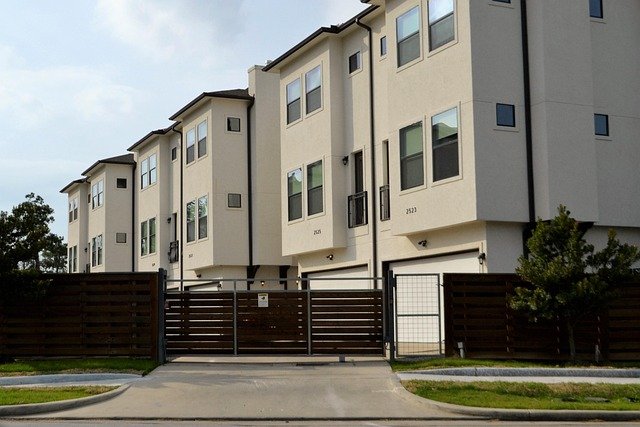A Comprehensive Guide to Sec 202 Housing for Seniors
Finding affordable housing is one of the most significant challenges for many older Americans living on fixed incomes. Section 202 Supportive Housing for the Elderly Program, commonly known as Sec 202 housing, offers a critical lifeline for low-income seniors. This federally funded program helps provide affordable housing with supportive services that allow seniors to live independently while receiving the assistance they need. This guide explains what Sec 202 housing is, eligibility requirements, application processes, and the benefits it offers to older adults.

What is Sec 202 Housing?
Section 202 Supportive Housing for the Elderly Program is the only federal housing program specifically designed to serve seniors. Established by the Housing Act of 1959, this program provides capital advances to nonprofit organizations to develop housing for very low-income elderly persons. These capital advances don’t need to be repaid as long as the housing remains available for low-income seniors for at least 40 years. The program also provides rent subsidies, known as Project Rental Assistance Contracts (PRAC), to cover the difference between the HUD-approved operating cost and the tenant’s contribution toward rent.
Sec 202 properties typically feature apartment-style units designed with accessibility features for aging residents. Many developments include communal spaces, laundry facilities, and on-site service coordination. Unlike nursing homes or assisted living facilities, Sec 202 housing emphasizes independent living while providing access to supportive services that help seniors age in place safely.
Eligibility Requirements for Sec 202 Housing
To qualify for Section 202 housing, applicants must meet specific criteria established by the U.S. Department of Housing and Urban Development (HUD):
-
Age requirement: At least one member of the household must be 62 years of age or older at the time of application.
-
Income limits: Applicants must be classified as “very low-income,” which means having an income less than 50% of the area median income (AMI) for their geographic location. In some cases, priority may be given to those with “extremely low income” (below 30% of AMI).
-
Citizenship status: Applicants must be U.S. citizens or eligible non-citizens with legal immigration status.
-
Background checks: Applicants must pass basic background and credit checks. The specific requirements vary by housing provider, but generally, they look for responsible rental history and absence of criminal activity that would threaten the health, safety, or welfare of other residents.
It’s important to note that eligibility requirements may have additional local criteria depending on the specific housing development and its funding sources.
How Can Seniors Apply to Sec 202 Housing
The application process for Section 202 housing requires patience and persistence, as demand typically exceeds available units. Here’s how seniors can navigate the application process:
-
Find available properties: Begin by identifying Sec 202 properties in your desired location. Resources include:
-
HUD’s Resource Locator (https://resources.hud.gov)
-
Local Area Agency on Aging
-
Senior centers or social service agencies
-
HUD-approved housing counseling agencies
-
-
Contact properties directly: Each Sec 202 property manages its own waiting list and application process. Contact properties that interest you to inquire about availability, waiting list status, and application procedures.
-
Complete applications: Prepare to complete separate applications for each property. Applications typically request:
-
Personal identification
-
Income and asset documentation
-
Rental history
-
References
-
Medical expenses (which may affect rent calculations)
-
-
Get on waiting lists: Due to high demand, most properties maintain waiting lists that can range from several months to several years. It’s advisable to apply to multiple properties to increase your chances.
-
Stay in touch: Once on a waiting list, maintain regular contact with the property managers to ensure your application remains active and to update any changes in contact information or circumstances.
Benefits for Seniors in Sec 202 Housing
Section 202 housing offers numerous advantages that go beyond simply providing affordable shelter:
-
Affordability: Residents typically pay no more than 30% of their adjusted gross income toward rent, making housing costs predictable and sustainable on fixed incomes.
-
Accessibility: Units are designed with aging in mind and include features such as grab bars, wide doorways for wheelchair access, emergency call systems, and elevators in multi-story buildings.
-
Supportive services: Many Sec 202 properties provide service coordination to help residents access:
-
Meals programs
-
Transportation services
-
Housekeeping assistance
-
Health services
-
Recreational activities
-
Community engagement opportunities
-
-
Community environment: Living among peers creates valuable social connections that help combat isolation and loneliness, which are significant health risks for older adults.
-
Aging in place: The combination of affordable housing with supportive services allows many seniors to maintain independence longer, delaying or avoiding more restrictive and costly living arrangements like nursing homes.
Challenges and Considerations
Despite its benefits, the Section 202 program faces significant challenges:
-
Limited availability: Funding constraints have limited new construction of Sec 202 housing in recent years, creating long waiting lists in many areas.
-
Geographic distribution: Availability varies widely by region, with some areas having few or no Sec 202 properties.
-
Varying amenities: The age of the property and funding levels affect the amenities and services available at each location.
-
Service coordination limitations: While many properties offer service coordination, the extent of services varies widely between locations.
Seniors considering Sec 202 housing should thoroughly research specific properties, including visiting in person if possible, to understand the exact living environment, available services, and community atmosphere before making decisions.
Conclusion
Section 202 Supportive Housing for the Elderly Program represents a vital resource for low-income seniors seeking safe, affordable housing with supportive services. With its focus on independent living and aging in place, Sec 202 housing helps address the complex housing needs of America’s growing senior population. While challenges like limited availability and long waiting lists exist, the program continues to provide essential housing stability for thousands of older adults across the country. Understanding eligibility requirements and navigating the application process proactively can help seniors access this valuable housing option.




